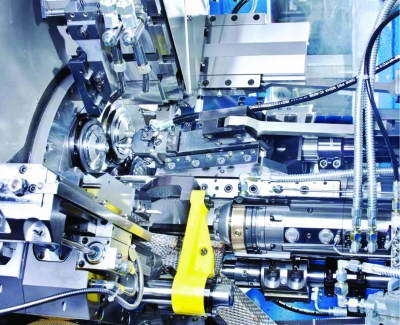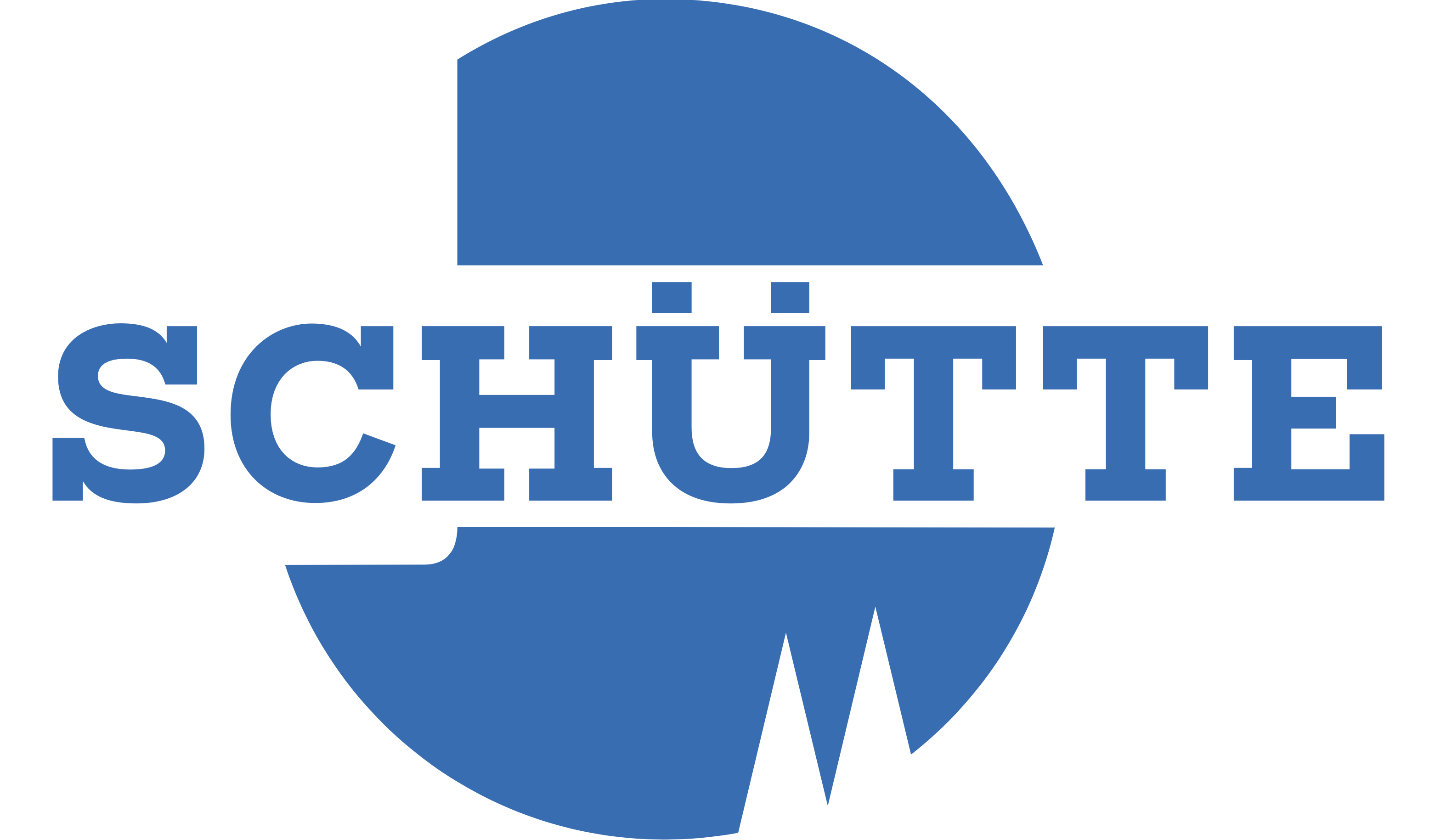
Schütte now sells its PC multiple-spindle automatics. Often, manufacturers need automatics that have greater capabilities. These include the machining of nonferrous metal or steel, a combination of heavy roughing and accuracy, simple programming combined with versatility and a single machine that performs several production processes. The answer to these challenges is Schütte’s PC series.
Automatics in the PC series are machining centers. They are used whenever classic cam-controlled automatics reach their limit. Besides turning, PC multispindle automatics perform tapping, mill cutting, polygon cutting and eccentric drilling operations. Six or eight work spindles, endworking and cross slides can be controlled independently of each other. Rear-side machining can have up to three tools. Over 56 CNC axes can be easily programmed with Schütte’s SICS 2000 system.
PC multispindle automatics are for material removal of geometrically sophisticated parts made of hard solid materials. The machines are designed to be robust, durable and technically flexible for complex drilling operations. Furthermore, they provide ready-to-install precision parts in large and small batch sizes. Machines in the PC series feature short setup, non-production and part production times.
These machines are used by automobile manufacturers and suppliers, the fittings, pneumatics and hydraulics sector, as well as in the production of precision parts.
Contact Details
Related Glossary Terms
- centers
centers
Cone-shaped pins that support a workpiece by one or two ends during machining. The centers fit into holes drilled in the workpiece ends. Centers that turn with the workpiece are called “live” centers; those that do not are called “dead” centers.
- computer numerical control ( CNC)
computer numerical control ( CNC)
Microprocessor-based controller dedicated to a machine tool that permits the creation or modification of parts. Programmed numerical control activates the machine’s servos and spindle drives and controls the various machining operations. See DNC, direct numerical control; NC, numerical control.
- milling machine ( mill)
milling machine ( mill)
Runs endmills and arbor-mounted milling cutters. Features include a head with a spindle that drives the cutters; a column, knee and table that provide motion in the three Cartesian axes; and a base that supports the components and houses the cutting-fluid pump and reservoir. The work is mounted on the table and fed into the rotating cutter or endmill to accomplish the milling steps; vertical milling machines also feed endmills into the work by means of a spindle-mounted quill. Models range from small manual machines to big bed-type and duplex mills. All take one of three basic forms: vertical, horizontal or convertible horizontal/vertical. Vertical machines may be knee-type (the table is mounted on a knee that can be elevated) or bed-type (the table is securely supported and only moves horizontally). In general, horizontal machines are bigger and more powerful, while vertical machines are lighter but more versatile and easier to set up and operate.
- tapping
tapping
Machining operation in which a tap, with teeth on its periphery, cuts internal threads in a predrilled hole having a smaller diameter than the tap diameter. Threads are formed by a combined rotary and axial-relative motion between tap and workpiece. See tap.
- turning
turning
Workpiece is held in a chuck, mounted on a face plate or secured between centers and rotated while a cutting tool, normally a single-point tool, is fed into it along its periphery or across its end or face. Takes the form of straight turning (cutting along the periphery of the workpiece); taper turning (creating a taper); step turning (turning different-size diameters on the same work); chamfering (beveling an edge or shoulder); facing (cutting on an end); turning threads (usually external but can be internal); roughing (high-volume metal removal); and finishing (final light cuts). Performed on lathes, turning centers, chucking machines, automatic screw machines and similar machines.







